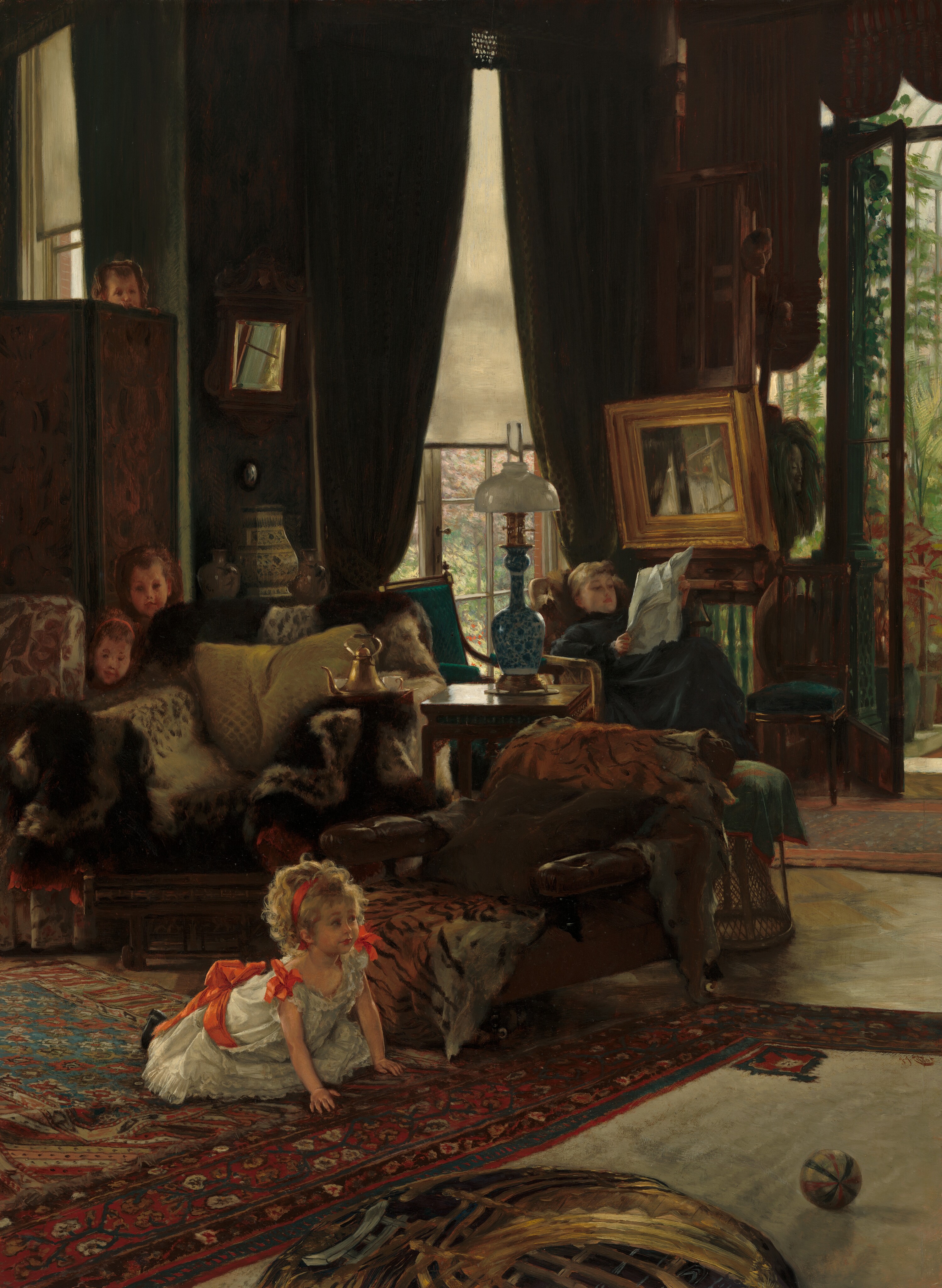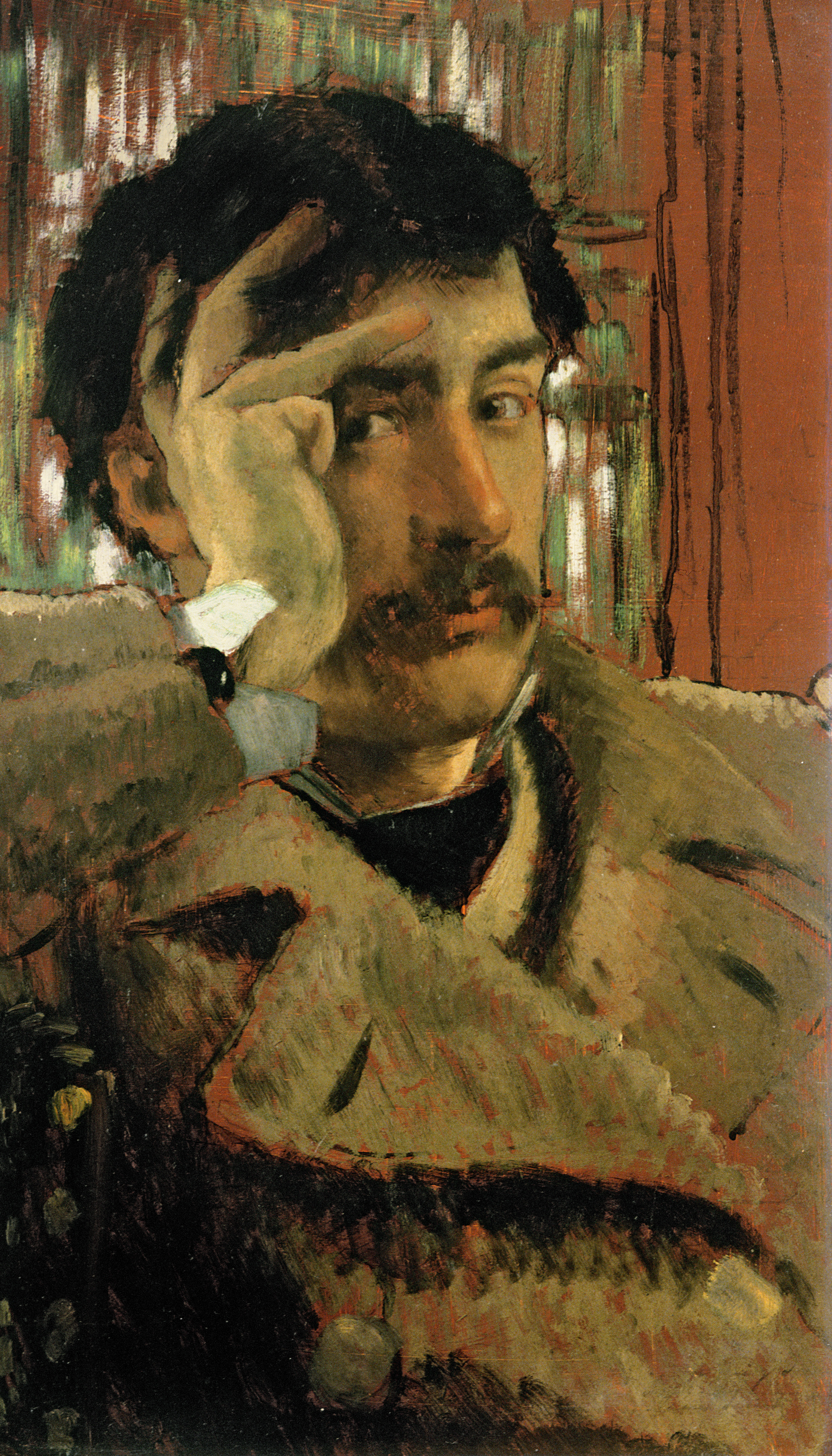In early 1874 Degas wrote, "Look here, my dear Tissot . . . you positively must exhibit at the Boulevard [in the first Impressionist exhibition] Exhibit. Be of your country and with your friends." Degas and Tissot, who met as students during the late 1850s, stayed in close communication even after Tissot fled to London in 1871 to avoid punishment for activities in the abortive Commune. Arguing that the benefits of declaring his allegiance to French art outweighed the potential harm it might cause among Tissot's London audience, Degas urged Tissot to show with the Impressionists and thereby affirm his ties to France and more particularly to Degas and impressionism. Tissot didn't accept the invitation.
He felt like being more of a realist. Hide and Seek depicts a modern, opulently cluttered Victorian room, Tissot's studio. After the love of his life Kathleen Newton entered his home in about 1876, Tissot focused almost exclusively on intimate, anecdotal descriptions of the activities of the secluded suburban household, depicting an idyllic world tinged by a melancholy awareness of the illness that would lead to her death in 1882.
P.S. Did you know that Edgar Degas had Haitian Creole ancestors? He travelled to New Orleans and painted portraits of his Creole family. You can get to know more about it here.
P.S.S. We have launched the presale of our paper wall and desk calendars for 2021! If you order them before November 8th you will get -30% discount :) We ship with DHL worldwide :) Please check the calendars on our shop: shop.dailyartmagazine.com


 James Tissot
James Tissot